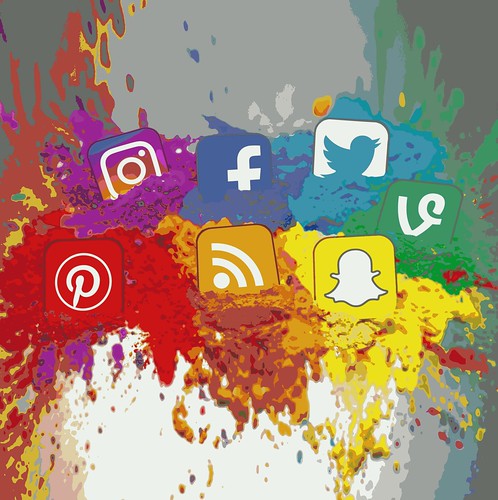Digital Identity
Last weeks June 7th class, we looked over the topic and discussed digital identity. Digital identity is how you present yourself to your friends, family, coworkers and people all across the world through online sources. These sources can be social networking sites such as Facebook, Instagram, Twitter, LinkedIn, YouTube and many other networking sites.
Photo Credit: Visual Content Flickr via Compfight cc
Your digital identity is fundamental to how people view you. Of course, your family and friends know who you are as a person, but millions of people may stumble across your social networking sites and feel the need to have an opinion on what kind of person they think you are based on your digital identity. This is why it is important to be smart about what you post as millions of people on the internet can be unforgiving.
In class we looked over a few posts on Twitter made by individuals that resulted in a negative digital identity, which led to cyberbulling, stalking, and harassment. These are the dangers of the internet. Prior to the advance of technology, information, pictures and private conversations were shared with mainly friends, family and possibly a small area around your surrounding location. However, in modern times information, images and private conversations can be shared with a simple screenshot and the click of a very powerful button.
Monica Lewinsky is a perfect example of how very private conversations can be used against you for public humiliation. In her TED Talk “The Price of Shame”, Lewinsky speaks of her mistake of falling in love with the president of the United States in 1998. Lewinsky speaks volumes when she said the following quote: “Overnight I went from a completely private figure to a publicly humiliated one worldwide” (Monica Lewinsky, 2015). With the ever growing rate of technology news travels fast. Through this scandal, outside sources were able to get a hold of Lewinsky’s very personal and private phone call audio and uploaded them to the internet for all to hear and be used against her.
This is why it is important as parents and educators to educate our children on the dark side of the internet. With my own little twist, I would like to say that anything you say on the internet may be used against you in a court law of with the internet trolls! In the TED talk “One Tweet Can Ruin Your Life” by Jon Ronson, the host states at the end, that the first few pages of google consisted of negative stories on one individual when you look up this persons name. With blogging positively about this person and having them blog positive things as well they managed to get the negative results off the first page. However, that did not last long before the negative search results started creeping back onto the first couple pages of the google search. This goes to show that the world never forgets.
How can we as parents and educators teach our children about the internet? Well first off, people will post whatever they want to post and most times do not consider the consequences until it is too late. We as educators can educate our students on the dangers of the internet and teach them safe ways to use the internet and how to be smart about what they post and what platforms they are using to post certain things. In my experience, I have not witnessed educating on internet use and digital identity in schools during my placements. However, I plan on teaching my students about the dangerous consequences through personal experiences. Of course these experiences will not be my own, but I can present my students with the experiences of Monica Lewinsky, Amanda Todd, Justine Sacco and many other people who have made mistakes that caused them to be tormented, publicly humiliated and threatened by millions of people on the internet.
Upon researching on how to help children keep a positive digital identity, I stumbled across the article “How to Help Your Child Build and Maintain a Positive Digital Identity” written by Devishobha Ramanan. It was interesting to read that children today are experiencing little spikes of Dopamine from reactions of their friends to their social media posts. This increases a child’s chance of becoming addicted to the internet. This is potentially dangerous as reactions like this can cause children to post things they wouldn’t normally post or create an image of themselves that is not truly who they are. The article provides us with a few important guidelines on how we as educators and parents can help our children maintain a positive digital identity. I found this article very useful and even learned a couple things myself! Once again, thank you for taking the time to read my blog posts. If you have any feedback or suggestions on how we can help our children maintain a positive digital identity, please comment below! Happy Blogging!

Hi Crystal,
Great blog. It’s well written, and looks impressive. You have a lot of interesting things to say.
Anthea
LikeLike
I think you have done a great job of highlighting the importance of digital identity and used great sources to support your work! Your writing is very clear and easy to read, which is great!
LikeLike